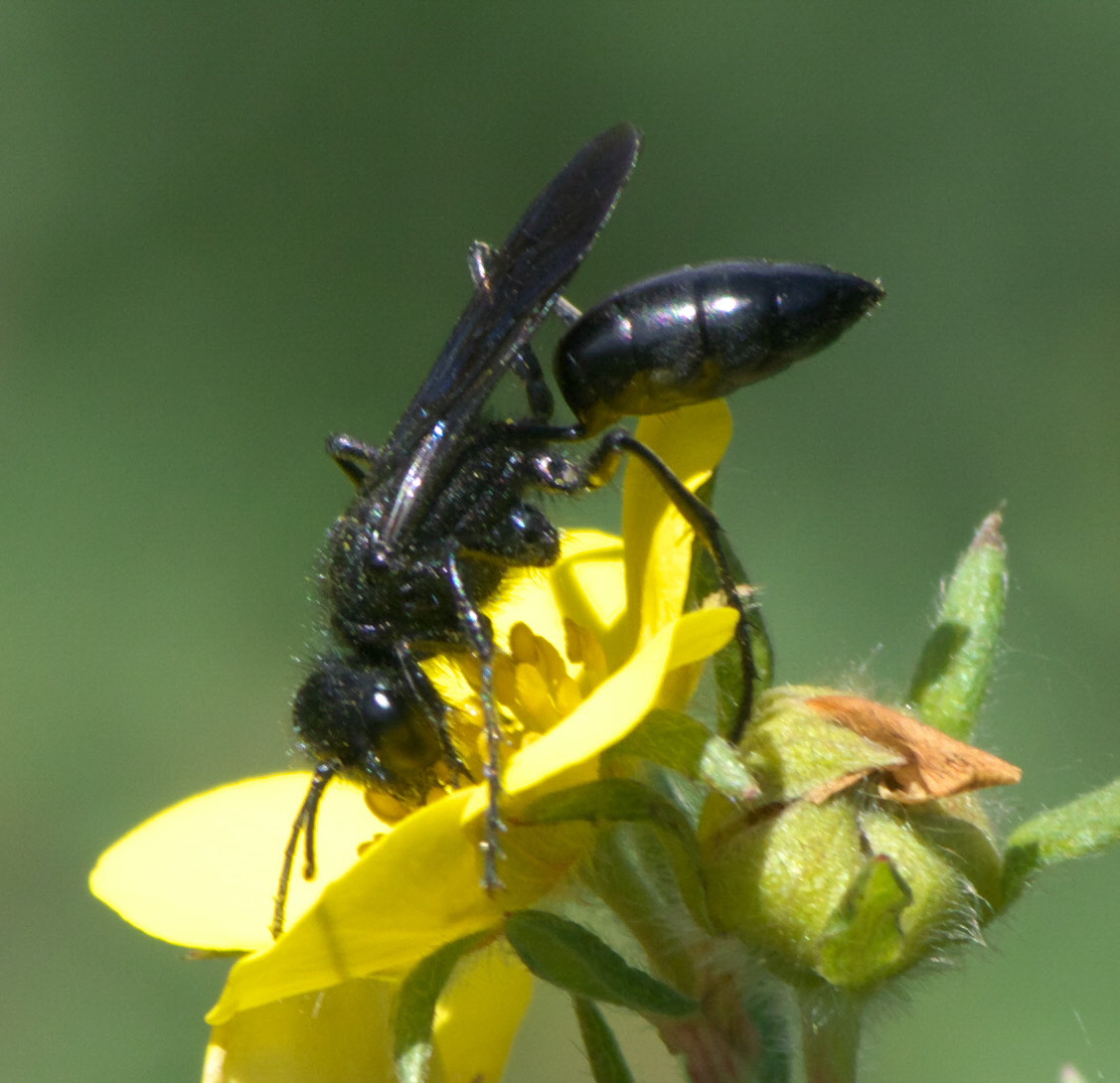|
Sphecinae
The Sphecinae is a subfamily of the digger wasp family Sphecidae. It contains the following genera: * '' Chilosphex'' Menke ''in'' R. Bohart and Menke, 1976 * '' Isodontia'' Patton, 1880 * '' Palmodes'' Kohl, 1890 * '' Prionyx'' Vander Linden, 1827 * ''Sphex Wasps of the genus ''Sphex'' (commonly known as digger wasps) are cosmopolitan predators that sting and paralyze prey insects. ''Sphex'' is one of many genera in the old digger wasp family Sphecidae (''sensu lato''), though most apart from the Sp ...'' Linnaeus, 1758 * '' Stangeella'' Menke, 1962 References Sphecidae Apocrita subfamilies {{Apoidea-stub ... [...More Info...] [...Related Items...] OR: [Wikipedia] [Google] [Baidu] |
Sphecidae
The Sphecidae are a cosmopolitan family of wasps of the suborder Apocrita that includes sand wasps, mud daubers, and other thread-waisted wasps. The name Sphecidae was formerly given to a much larger grouping of wasps. This was found to be paraphyletic, so most of the old subfamilies have been moved to the Crabronidae. Biology The biology of the Sphecidae, even under the restricted definition, is still fairly diverse; some sceliphrines even display rudimentary forms of sociality, and some sphecines rear multiple larvae in a single large brood cell. Many nest in pre-existing cavities, or dig simple burrows in the soil, but some species construct free-standing nests of mud and even (in one genus) resin. All are predatory and parasitoidal, but the type of prey ranges from spiders to various dictyopterans, orthopteroids and larvae of either Lepidoptera or other Hymenoptera; the vast majority practice mass provisioning, providing all the prey items prior to laying the egg. ... [...More Info...] [...Related Items...] OR: [Wikipedia] [Google] [Baidu] |
Isodontia
''Isodontia'' is a genus belonging to the family Sphecidae. Adults emerge from their cocoons in early summer, and usually make nests lined with grass or hay in hollow plant cavities. This has led to their common name being grass-carrying wasps. The larvae are often fed Orthoptera that the adult has paralyzed. Species Species within this genus include: * ''Isodontia albata'' * ''Isodontia alvarengai'' * ''Isodontia apicalis'' * ''Isodontia apicata'' * ''Isodontia aurifrons'' * ''Isodontia auripes'' * ''Isodontia auripygata'' * ''Isodontia azteca'' * ''Isodontia bastiniana'' * ''Isodontia boninensis'' * ''Isodontia bruneri'' * ''Isodontia capillata'' * ''Isodontia cellicula'' * ''Isodontia cestra'' * ''Isodontia chrysorrhoea'' * ''Isodontia costipennis'' * ''Isodontia cyanipennis'' * ''Isodontia delicata'' * ''Isodontia diodon'' * ''Isodontia dolosa'' * ''Isodontia edax'' * ''Isodontia egens'' * ''Isodontia elegans'' * ''Isodontia elsei'' * ''Isodontia exornata'' * ''Isodontia ... [...More Info...] [...Related Items...] OR: [Wikipedia] [Google] [Baidu] |
Sphex
Wasps of the genus ''Sphex'' (commonly known as digger wasps) are cosmopolitan predators that sting and paralyze prey insects. ''Sphex'' is one of many genera in the old digger wasp family Sphecidae (''sensu lato''), though most apart from the Sphecinae have now been moved to the family Crabronidae. There are over 130 known ''Sphex'' species. Behaviour In preparation for egg laying, they construct a protected "nest" (some species dig nests in the ground, while others use pre-existing holes) and then stock it with captured insects. Typically, the prey are left alive, but paralyzed by wasp toxins. The wasps lay their eggs in the provisioned nest and the wasp larvae feed on the paralyzed insects as they develop. The great golden digger wasp (''Sphex ichneumoneus'') is found in North America. The developing wasps spend the winter in their nest. When the new generation of adults emerge, they contain the genetically programmed behaviors required to carry out another season of nest buil ... [...More Info...] [...Related Items...] OR: [Wikipedia] [Google] [Baidu] |
Isodontia Larva
''Isodontia'' is a genus belonging to the family Sphecidae. Adults emerge from their cocoons in early summer, and usually make nests lined with grass or hay in hollow plant cavities. This has led to their common name being grass-carrying wasps. The larvae are often fed Orthoptera that the adult has paralyzed. Species Species within this genus include: * ''Isodontia albata'' * ''Isodontia alvarengai'' * ''Isodontia apicalis'' * ''Isodontia apicata'' * ''Isodontia aurifrons'' * ''Isodontia auripes'' * '' Isodontia auripygata'' * ''Isodontia azteca'' * ''Isodontia bastiniana'' * ''Isodontia boninensis'' * '' Isodontia bruneri'' * '' Isodontia capillata'' * '' Isodontia cellicula'' * '' Isodontia cestra'' * '' Isodontia chrysorrhoea'' * '' Isodontia costipennis'' * '' Isodontia cyanipennis'' * '' Isodontia delicata'' * '' Isodontia diodon'' * '' Isodontia dolosa'' * ''Isodontia edax'' * ''Isodontia egens'' * ''Isodontia elegans'' * ''Isodontia elsei'' * ''Isodontia exornata'' * ' ... [...More Info...] [...Related Items...] OR: [Wikipedia] [Google] [Baidu] |
Sphex Ichneumoneus
''Sphex ichneumoneus'', known commonly as the great golden digger wasp or great golden sand digger is a wasp in the family Sphecidae. It is identified by the golden pubescence on its head and thorax, its reddish orange legs, and partly reddish orange body. This wasp is native to the Western Hemisphere, from Canada to South America, and provisions its young with various types of paralyzed Orthoptera. D. Hofstadter cites the observation by Woodridge of ''S. ichneumoneus'' continually repeating behavior (checking a burrow before pulling in a cricket) as an example of genetic determinism, calling the behavior "sphexish". It is an example of a fixed action pattern, as described by H.J. Brockmann, where the sign stimulus A fixed action pattern is an ethological term describing an instinctive behavioral sequence that is highly stereotyped and species-characteristic. Fixed action patterns are said to be produced by the innate releasing mechanism, a "hard-wired" neural ... is the sight o ... [...More Info...] [...Related Items...] OR: [Wikipedia] [Google] [Baidu] |
Kelsterbach Fg35
Kelsterbach () is a town in Groß-Gerau district in Hessen, Germany and part of the Frankfurt Rhein-Main urban area. It is located on Frankfurt's southwestern outskirts at a bend on the left bank of the river Main, right where a small brook, called the Kelster (and ''Bach'' means "brook") joins the river. After the Frankfurt–Mainz railway line was built, this formerly mostly agricultural village was transformed by the great number of large factories that located here, bringing along with them a great upswing in the town's population. In the decades following the Second World War, many businesses that were related to Frankfurt International Airport moved to the town. Kelsterbach is home to 16,565 people (). The town is an important centre for logistical service providers and chemical production. In 1952, it acquired the status of "town." Geography Location The town lies on the south side of the Main and west of the Frankfurt City Forest. The original village centre, co ... [...More Info...] [...Related Items...] OR: [Wikipedia] [Google] [Baidu] |
California Academy Of Sciences
The California Academy of Sciences is a research institute and natural history museum in San Francisco, California, that is among the largest museums of natural history in the world, housing over 46 million specimens. The Academy began in 1853 as a learned society and still carries out a large amount of original research. The institution is located at the Golden Gate Park in San Francisco. Completely rebuilt in 2008, the Academy's primary building in Golden Gate Park covers . In early 2020, before the COVID-19 pandemic, the California Academy of Sciences had around 500 employees and an annual revenue of about $33 million. Governance The California Academy of Sciences, California's oldest operating museum and research institution for the natural sciences, is governed by a forty-one member Board of Trustees who are nominated and chosen by the California Academy of Sciences Fellows California is a state in the Western United States, located along the Pacific Coast. Wit ... [...More Info...] [...Related Items...] OR: [Wikipedia] [Google] [Baidu] |
Palmodes
''Palmodes'' is a genus of thread-waisted wasps in the family Sphecidae. There are more than 20 described species in ''Palmodes''. Species These 21 species belong to the genus ''Palmodes'': * '' Palmodes californicus'' R. Bohart & Menke, 1961 * '' Palmodes carbo'' Bohart & Menke, 1963 * '' Palmodes dimidiatus'' (De Geer, 1773) * '' Palmodes garamantis'' (Roth, 1959) * '' Palmodes hesperus'' Bohart & Menke, 1961 * '' Palmodes insularis'' Bohart & Menke, 1961 * '' Palmodes laeviventris'' (Cresson, 1865) * ''Palmodes lissus'' Bohart & Menke, 1961 * ''Palmodes melanarius'' (Mocsáry, 1883) * ''Palmodes minor'' (F. Morawitz, 1890) * ''Palmodes occitanicus'' (Lepeletier de Saint Fargeau & Serville, 1828) * ''Palmodes orientalis'' (Mocsáry, 1883) * ''Palmodes pacificus'' Bohart & Menke, 1961 * ''Palmodes palmetorum'' (Roth, 1963) * ''Palmodes parvulus'' (Roth in de Beaumont, 1967) * ''Palmodes praestans'' (Kohl, 1890) * ''Palmodes pusillus'' (Gussakovskij, 1930) * ''Palmodes rufiventri ... [...More Info...] [...Related Items...] OR: [Wikipedia] [Google] [Baidu] |
Prionyx
''Prionyx'' is a genus of wasps in the family Sphecidae. They are known to hunt and feed on grasshoppers. Behavior Prior to laying their eggs the female ''Prionyx'' stings a grasshopper causing paralysis. She will then bury the grasshopper in a burrow she has excavated, lay an egg on the body, and then seal the burrow. When the egg develops it feeds on the grasshopper until it has matured, and then pupates. Name Origin The name ''Prionyx'' comes from the Greek words "Prion" (Saw) and "Onyx/Onychus" (Claw), which refers to the saw-like endings on the creature's legs. Species These 59 species belong to the genus ''Prionyx'': * ''Prionyx afghaniensis'' (de Beaumont, 1970) * ''Prionyx atratus'' (Lepeletier de Saint Fargeau, 1845) * ''Prionyx bifoveolatus'' (Taschenberg, 1869) * ''Prionyx binghami'' Jha and Farooqi, 1996 * ''Prionyx canadensis'' (Provancher, 1887) * ''Prionyx chilensis'' (Spinola, 1851) * ''Prionyx chobauti'' (Roth, 1925) * ''Prionyx crudelis'' (F. Smith, 1856) ... [...More Info...] [...Related Items...] OR: [Wikipedia] [Google] [Baidu] |





